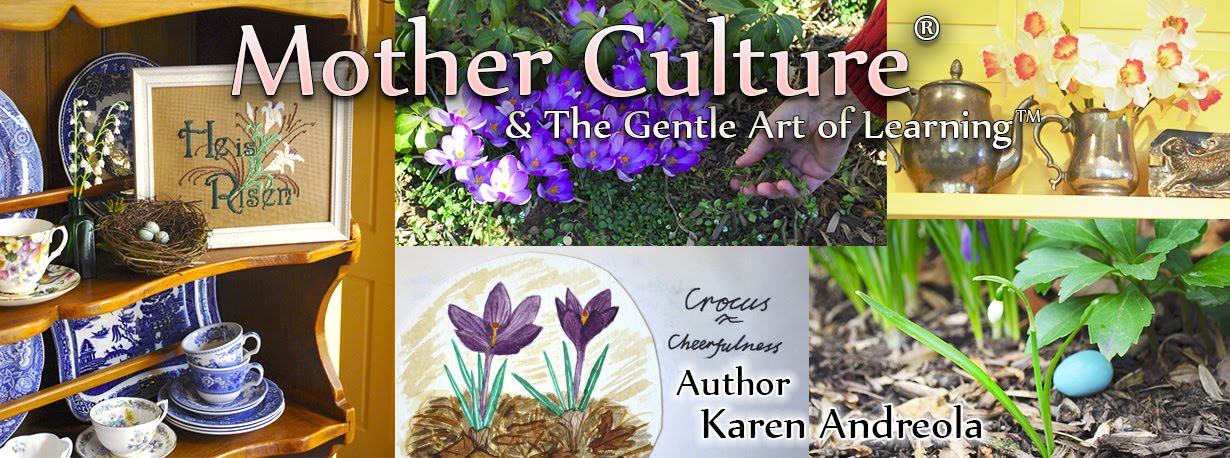Willing Hands
(Of Louisa May Alcott)
Two years ago I purchased a sampler chart made in Denmark.
The original sampler stitched by Anna Thies in 1859, once hung in the Deutschen
Stickmuster Celle, a museum in Germany. The museum closed this year.
The DMC threads and linen were acquired at Hodge Podge in
Historic Strasburg. I like the sampler’s fancy alphabet, the cat, the faded wreath of roses – representing
the aged appearance of the sampler today - faded that is – all except for its
tenacious Turkey red.
Little by little I worked on it.
Ideas occur to a stitcher. In the relaxing slowness she
ponders. It occurred to me after stitching the first alphabet that I might
replace the second with a verse from Proverbs that especially speaks me.
She seeks wool and flax, And willingly works with her hands.
How convenient it was that the thread count within the space
accommodated the verse nicely.
 While I began to stitch this into the sampler I had my head
in the biography, Invincible Louisa, written
by Cornelia Meigs in the 1930s. Its pages contributed to my Mother Culture.
Here’s why.
While I began to stitch this into the sampler I had my head
in the biography, Invincible Louisa, written
by Cornelia Meigs in the 1930s. Its pages contributed to my Mother Culture.
Here’s why.
It is encouraging to get to know a woman such as Louisa May
Alcott – a woman with “family love, loyalty and devotion. Upon such things the
very structure of life is built.”*1 She worked with willing hands for the extent of her life.
I liked reading the earliest parts of the book, Louisa’s
infant years when her father, Bronson Alcott, was a contented teacher for a Quaker community in
Pennsylvania. In a few years circumstances become strained. The Alcott’s experience
pangs of poverty and dismay – but accompanied by courage and good humor –
remarkably so.
Bronson's experiment at Fruitlands in Massachusetts
is his attempt to live out the utopian ideals of Transcendentalism. His wife Abba – the only woman of the
little commune - has her hands full. She “who had toiled without ceasing for a
moment since daylight, would be sitting by the single lamp, sewing as though
her life depended on it.”*2 Abba prepares all the food, sweeps, washes, and
keeps their family of six clothed quite primitively. Unlike Louisa’s novel Little Women, there is no mention of an “old
Hannah” to help out.
The tree-lined meadows of Fruitlands were a beautiful expansive playground for young Louisa - one of four sisters - but her memories of it were not always bright. At age 8, she admires her mother’s spirit and helps her in any way she can, for there were times when Abba is left to take care of the farm.
The tree-lined meadows of Fruitlands were a beautiful expansive playground for young Louisa - one of four sisters - but her memories of it were not always bright. At age 8, she admires her mother’s spirit and helps her in any way she can, for there were times when Abba is left to take care of the farm.
 |
| Pretty lace maiden made by a mom in Australia |
By contrast to the Shaker Community across the river, which traded with the outside world, Fruitlands was meant to be self-supporting. Yet, it is doomed for other reasons, too. No animal could be forced into labor to plow or harvest. Nothing an animal produced could be used for food. The men of the commune are more philosophic than practical. In seven months the experiment ended.
Invincible Louisa
began to wear on me as any tale of struggle would. The countless household
moves and the inability of Bronson Alcott to provide for his family aroused my
sympathy. He has no talent for commerce. His teaching positions are fleeting. A
profound thinker and excellent speaker he travels and lectures on
transcendental philosophy. The pay is a pittance but Abba always welcomes him
home with open arms.
I am glad I kept turning the pages. Although difficulties
arise in dwelling after dwelling where they live, there is never depression.
“Something ridiculous was always to be seen in every adventure, something to
call forth mirth and become the basis for a family joke.” *3 Doesn’t this sound
like the stories she wrote?
As a young woman Louisa sets out to somehow be a financial
help to her family. She writes for magazines. She authors little fairy stories.
This is something. But when finances become desperate she learns that her long
hair is worth a startling and tempting amount of money. Does she ever cash in
this reserved capital?

After serving her country, nursing wounded civil war soldiers in Washington D.C., after utter exhaustion, recovering from a life-threatening illness, Louisa is urged to write a novel by a renowned publishing agent. She sees the need for a story of quality, “instead of the sentimental and tragic tales which [young] minds were usually fed.”*4 Little Women is the result. It was an instant success, a book well loved by many.
 Cornelia Meigs softly relates that Louisa “was unlike
Bronson, that although she was devoted to him, there were certain of his ideas
which she did not truly comprehend, . . . she did not quite fathom the motives
behind them.”*5 In Little Women in which
she writes about what she knows and loves best - her mother and sisters - she says little about the father
of the story. She does, however, acknowledge Bronson while she describes
the perfect school for poor boys that he always dreamed he could
establish.
Cornelia Meigs softly relates that Louisa “was unlike
Bronson, that although she was devoted to him, there were certain of his ideas
which she did not truly comprehend, . . . she did not quite fathom the motives
behind them.”*5 In Little Women in which
she writes about what she knows and loves best - her mother and sisters - she says little about the father
of the story. She does, however, acknowledge Bronson while she describes
the perfect school for poor boys that he always dreamed he could
establish.
With the publication of Little Women, and her other novels, Jo’s Boys, Little Men,
An Old Fashioned Girl, Eight Cousins, etc., that
follow, life gives Louisa what she asked of it - finally - security for those
whom she loved dearly – a happy ending. Fame and fortune are won by some but
few win it with so much affection, affection that lasts for more than a
century.
Although Louisa May Alcott’s novels will appear as suggested
reading for young readers, and this is fine, I think a more mature student would
benefit by her greater sympathy.
In Your Story Hour Volume 2 a commemorative tale is told
about her. The Your Story Hour
recordings were heard over and over in our family. They will meet the
expectations of those who seek inspiring content expertly told.
After a novel or two, a high school student would appreciate
Invincible Louisa.
Above all, this biography as well as the novels, makes a welcome read for an
adult. By them we who are walking through life’s pressing responsibilities, we
who are faced with life’s increased challenges, will be reminded not to give up
on our dreams.
End Notes
Cornelia Meigs, Invincible Louisa, Scholastic Inc.
*1 pg64 *2
pg 56 *3 pg 89 *4 pg 200 *5 pg 213
Do you like historical houses? I do. To see a tour of rooms click Orchard House. It is where Louisa wrote Little Women. Fruitlands is preserved and open as a museum today, too.
 |
| My sampler photographed on the back of the sofa awaits framing. Can you see the verse from Proverbs? |
Comments are Welcome,
Karen Andreola






























